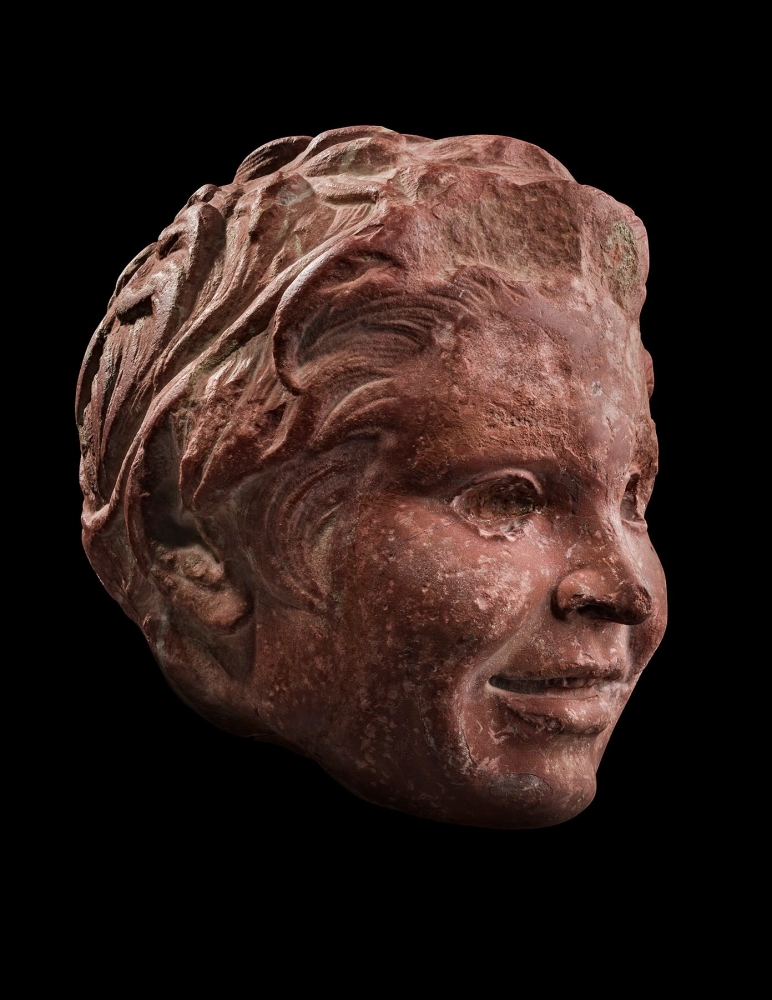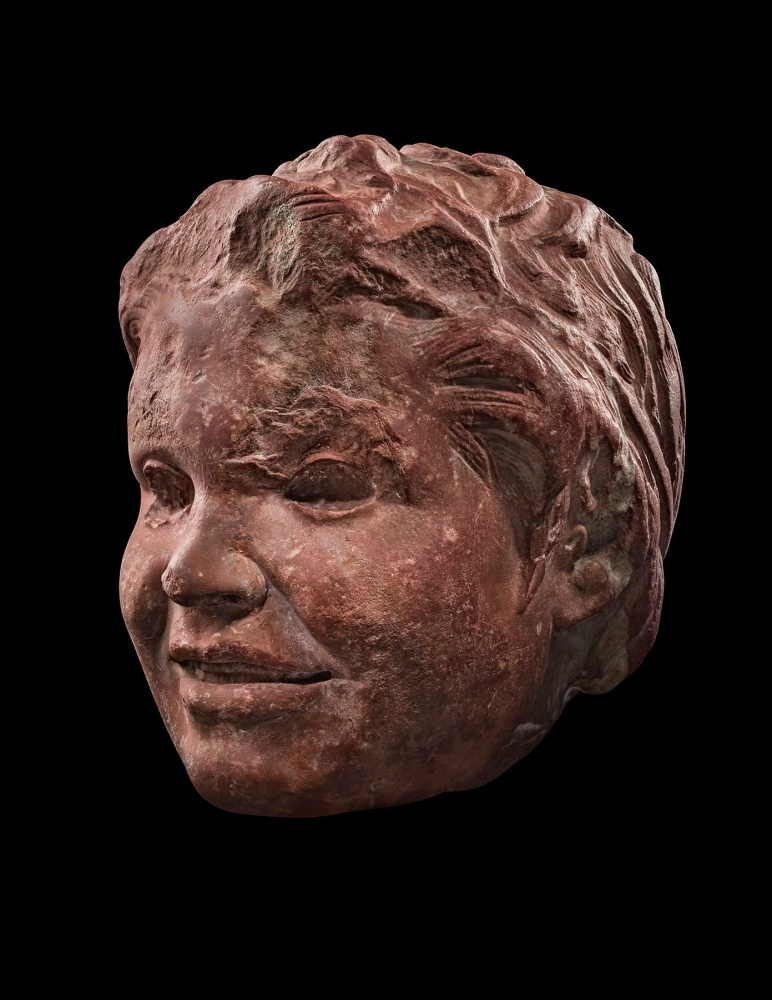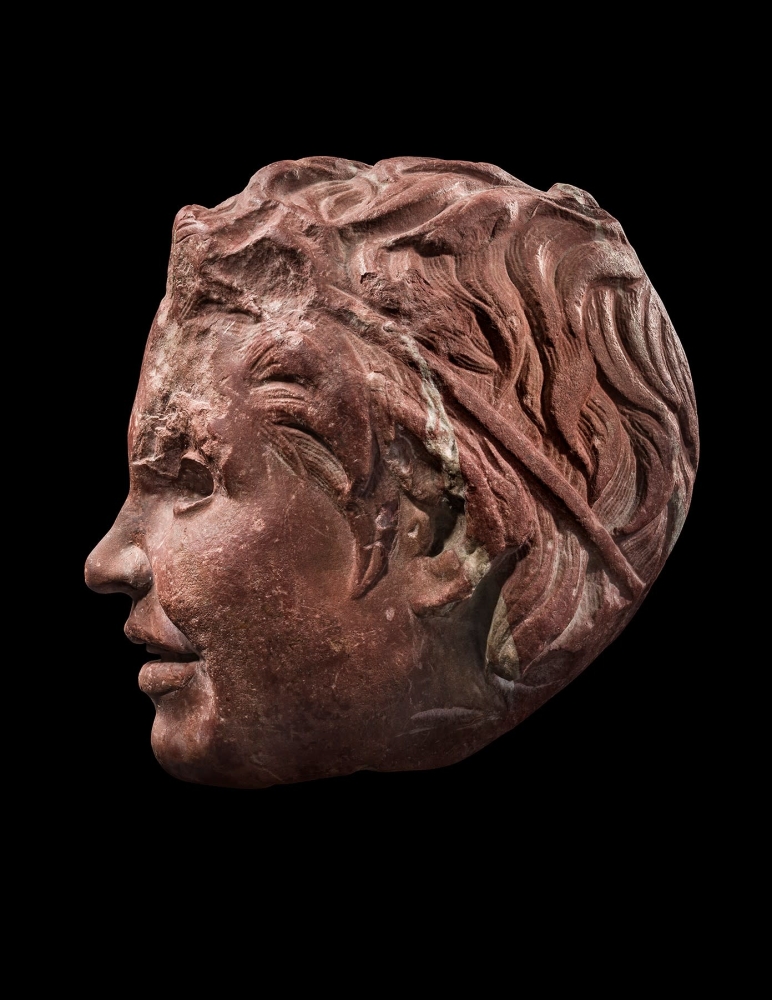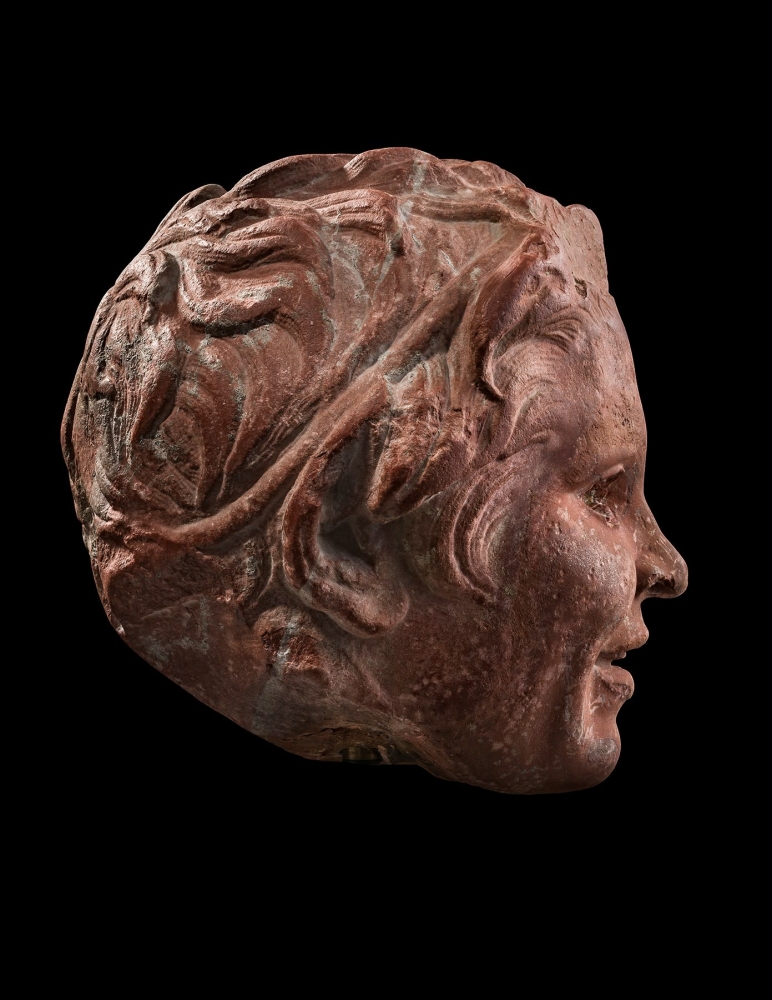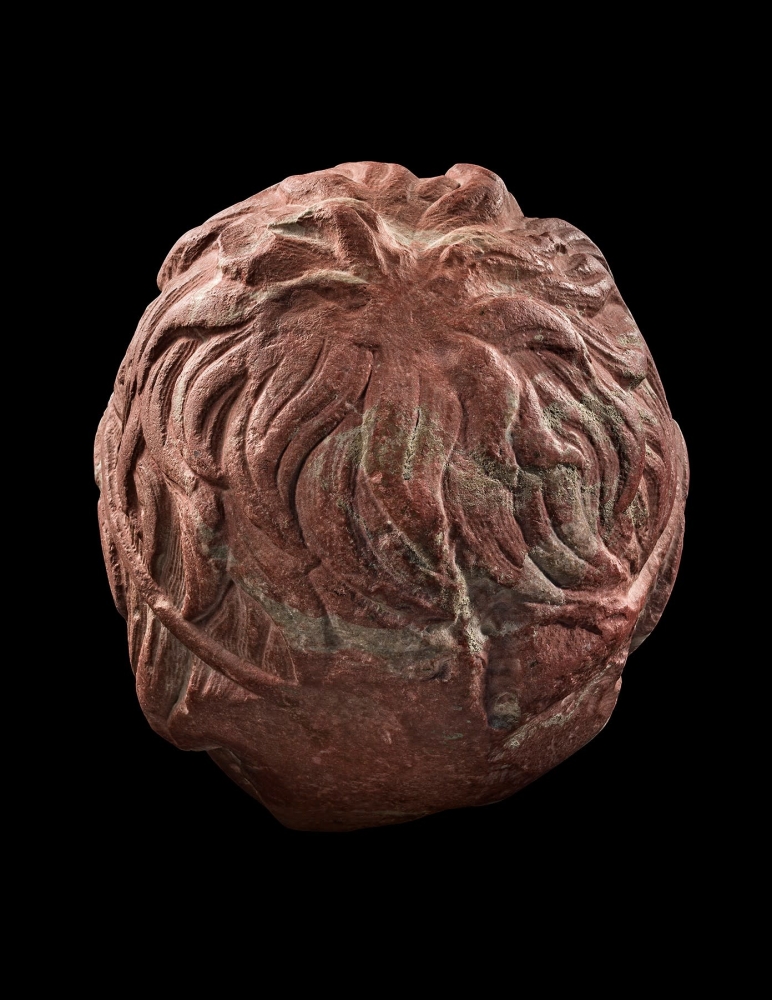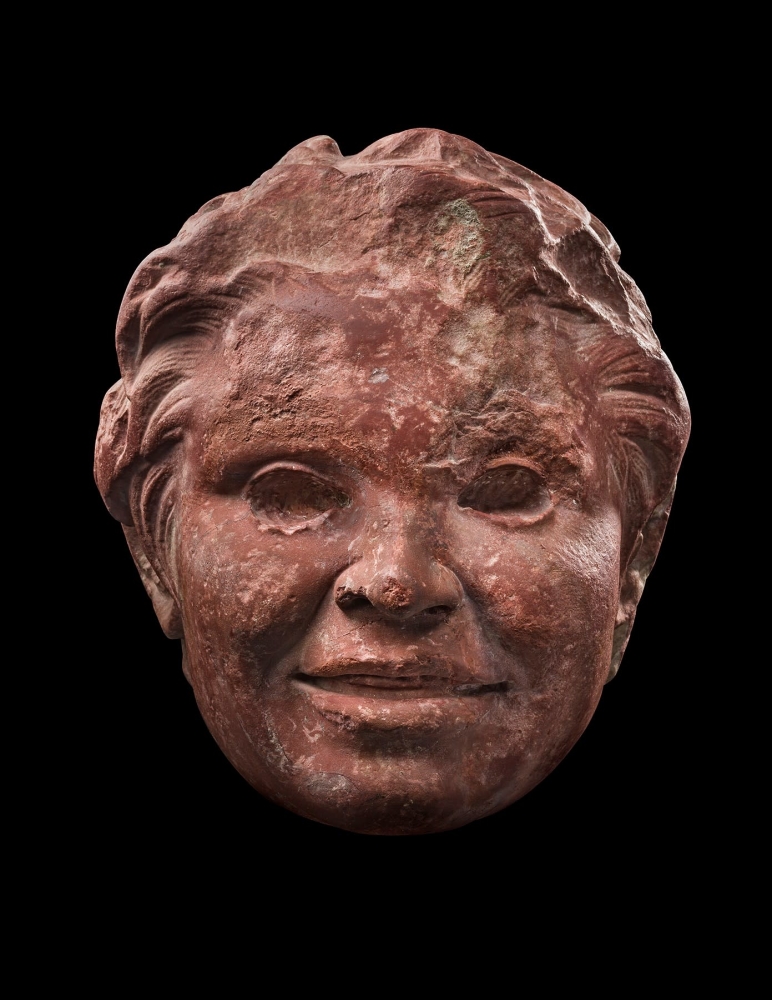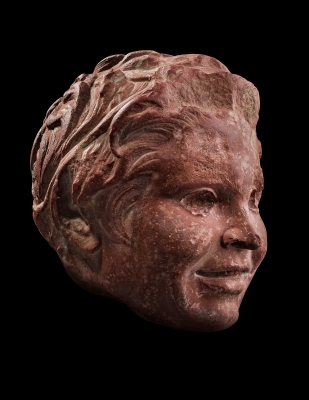Ivanitsky Collection (New York) before 1969;
Art Market (New York) 1989-1999;
Dr. Robert Rosenson (Chicago) 1999-2019.
New York, The Brooklyn Museum of Art, 1969-1989 (loan no. L69.20.5).
Click here to download the factsheet
This very unusual and expressive head comes from a statue of a young satyr. Satyrs were part-human and part-animal creatures popular in Greco-Roman mythology; they were conceived of as frolicking denizens of the woodlands, ever ready for mischief in order to satisfy their unrestrained urges. Although in ancient art satyrs were rendered in different ways, the youthful satyr type was introduced in Greek art during the fourth century B.C. Its success is attested by the many later statutes of young satyrs produced during the Hellenistic and Roman periods.
Our satyr head belongs to such a Roman statute made sometime in the early second century A.D. With a large grinning countenance, the satyr looks outward toward the viewer. The piercing quality of the stare was originally emphasized by inlays which were once inserted in the eye sockets. The satyr’s hair is brushed back revealing the forehead and emphasizing the round contours of the face; the side tresses are arranged in large crescent-shaped locks, a feature characteristic of young satyrs.
A remarkable aspect of this head is the material in which it is sculptured, a reddish marble known by its Italian name of rosso antico. In Roman times such pieces were extremely expensive to produce because coloured marbles were not available locally on the Italian peninsula and had to be imported over long distances from places like Egypt. Therefore, this satyr head belongs to a select class of objects, undoubtedly commissioned by affluent individuals who could afford their substantial cost.
Three related pieces in coloured marble are displayed in Rome’s Capitoline Museum. All were part of the sculptural decoration found among the ruins of a large imperial villa built by emperor Hadrian in Tivoli. Two of these are centaurs and are carved in a grayish marble; the third statue, executed in rosso antico, shows a satyr holding grapes. The head of this statue is very similar to ours in both medium and style. Like its counterparts in the Capitoline Museum, our head stood on a statue which embellished a palatial residence owned by a very wealthy Roman; there, seen by countless guests, it symbolized the sophistication and prestige of its owner.
